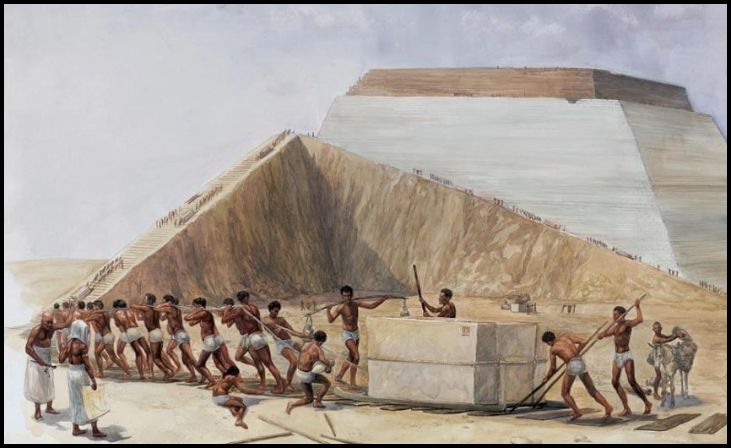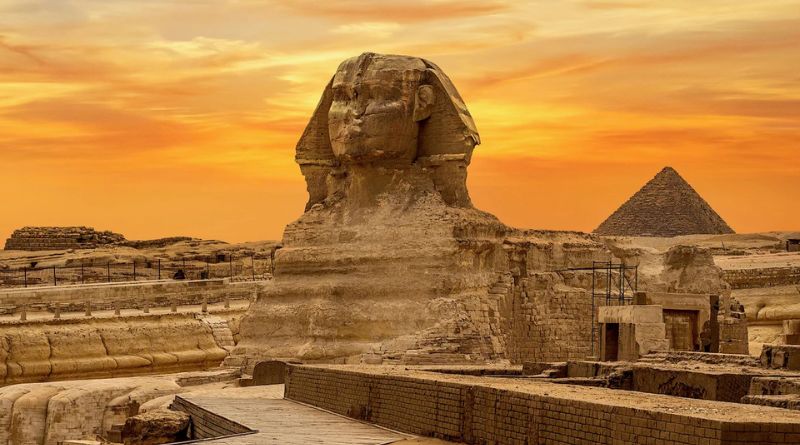For centuries, the construction of the ancient Egyptian pyramids has puzzled historians and archaeologists alike. The recent groundbreaking discovery by researchers at the University of North Carolina Wilmington might finally provide answers to one of history’s most enduring enigmas: how were the monumental pyramids of Giza and other complexes constructed over 4,000 years ago?
The Landmark Discovery

Professor Eman Ghoneim and her team have uncovered a long-lost branch of the River Nile, which they believe was instrumental in the construction of Egypt’s pyramids. This ancient waterway, known as the Ahramat branch, had been concealed under layers of desert sand and farmland for millennia. By employing advanced techniques such as radar satellite imagery, historical maps, geophysical surveys, and sediment analysis, the researchers were able to map this ancient river.
Revealing the Ahramat Branch
The study, published in Nature Communications Earth & Environment, reveals that the Ahramat branch stretched approximately 64 kilometers long and varied in width from 200 to 700 meters. This river branch, active during the pyramid-building era, ran close to 31 pyramids constructed between 4,700 and 3,700 years ago. The proximity of these pyramids to the river likely played a critical role in their construction.
The Significance of the Nile

The Nile River has always been regarded as the lifeline of ancient Egypt, supporting agriculture, transportation, and daily life. This discovery emphasizes its pivotal role in the construction of the pyramids. Dr. Suzanne Onstine, a co-author of the study, highlighted that the waterway allowed ancient Egyptians to transport massive stone blocks and equipment with the river’s flow, significantly reducing the labor required.
Historical Context
The Ahramat branch’s existence aligns with historical records that suggest a thriving network of waterways around ancient Egypt. These rivers and canals facilitated the movement of people, goods, and building materials, making large-scale construction projects like the pyramids feasible.
Environmental Changes
Over time, environmental changes, including drought and sandstorms, buried the Ahramat branch under desert sands. This discovery not only solves the mystery of the pyramids’ construction but also illustrates how environmental shifts have historically impacted human societies.
How the Pyramids Were Built

The construction of the pyramids involved transporting enormous limestone and granite blocks from quarries to the building sites. The newly discovered waterway provided a natural and efficient route for this transportation.
Transporting Stone Blocks
Ancient Egyptians likely used wooden boats to ferry stone blocks along the Ahramat branch. The river’s current would have eased the movement of these heavy materials, which were then hauled to the construction sites, reducing the need for extensive human labor.
Engineering Feats

The Egyptians were master engineers, and their ability to leverage natural resources like the Nile demonstrates their ingenuity. The Ahramat branch’s role in pyramid construction underscores the sophisticated planning and resource management skills of ancient Egyptian civilization.
The Role of Technology in the Discovery
The discovery of the Ahramat branch is a testament to modern technology’s power in unraveling ancient mysteries. By combining radar satellite imagery, historical maps, and geophysical surveys, researchers could peer beneath the desert surface and reconstruct the landscape as it existed thousands of years ago.
Radar Satellite Imagery
This technology allowed researchers to detect variations in the soil and subsoil, indicating the presence of ancient waterways. Radar images can penetrate the ground, revealing structures and features hidden from the naked eye.
Geophysical Surveys and Sediment Analysis
Geophysical surveys provided detailed information about the sub-surface structures, while sediment analysis helped date the river and understand its historical significance. By studying the sediments, researchers could reconstruct the environmental conditions of ancient Egypt and their impact on human activities.
Implications for Future Research
This discovery opens new avenues for archaeological and environmental research. Understanding the historical relationship between the Nile and ancient Egyptian civilization can shed light on how other ancient societies might have similarly adapted to and utilized their natural environments.
Preserving Ancient Heritage
Recognizing the significance of such waterways in historical construction can also aid in the preservation of ancient heritage sites. Efforts to protect these areas can benefit from this enhanced understanding of the environmental factors that shaped them.




